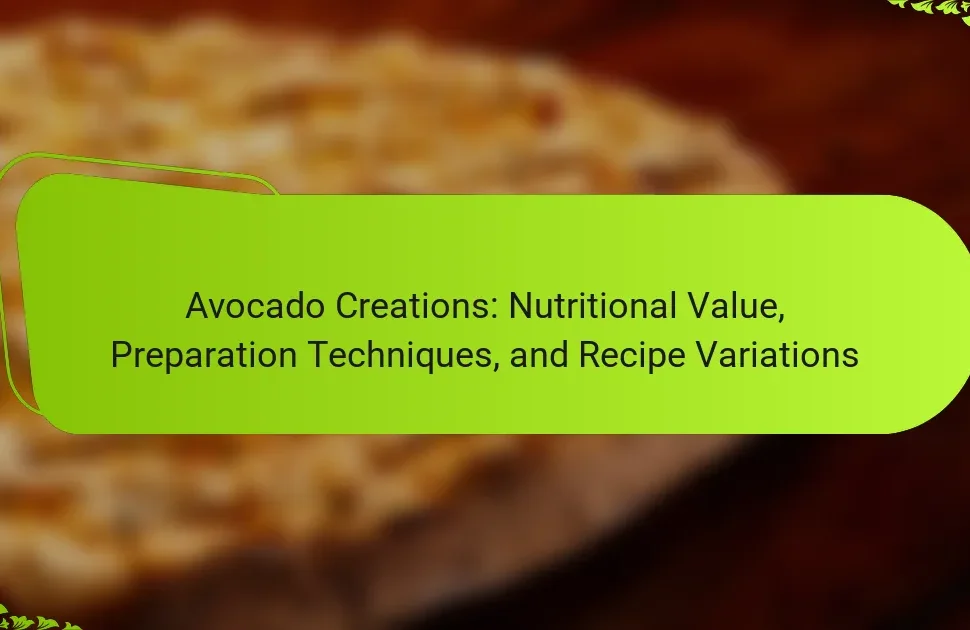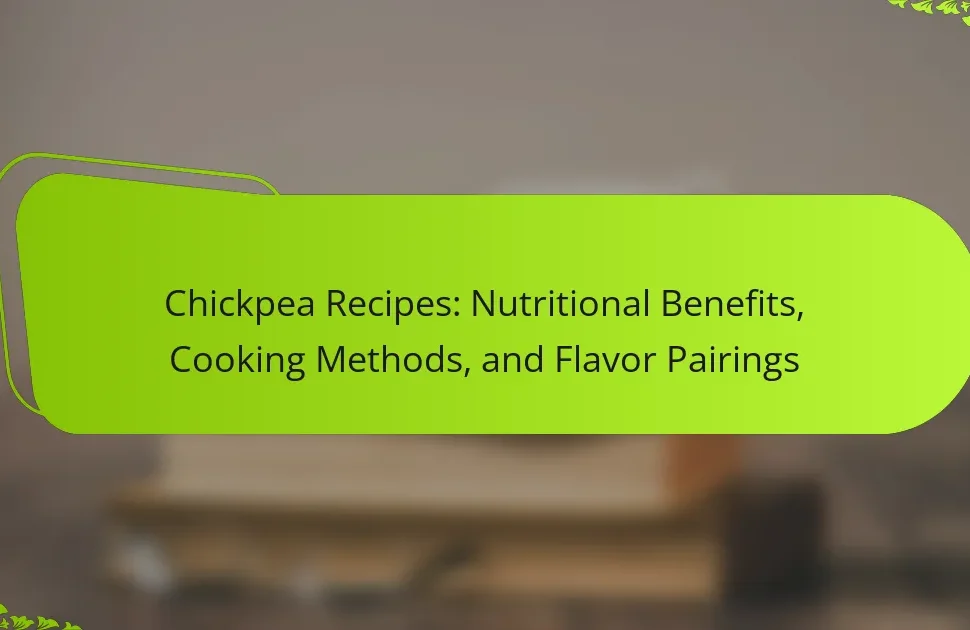
What is Tofu and Why is it Popular?
Tofu is a soy-based protein made from coagulated soy milk. It is popular due to its versatility in cooking and nutritional benefits. Tofu can absorb flavors from marinades and spices, making it suitable for various dishes. It is low in calories and high in protein, containing about 8 grams of protein per 100 grams. Additionally, tofu provides essential nutrients like calcium and iron. Its plant-based nature appeals to vegetarians and vegans. Tofu’s ability to be prepared in many ways, such as grilling, frying, or baking, enhances its culinary appeal. This adaptability contributes to its popularity in diverse cuisines worldwide.
How is Tofu Made?
Tofu is made by coagulating soy milk and pressing the resulting curds into solid blocks. First, soybeans are soaked in water, then ground and boiled to create soy milk. Next, a coagulant, typically magnesium chloride or calcium sulfate, is added to the hot soy milk. This causes the proteins and fats to separate, forming curds. The curds are then collected and pressed into molds to remove excess liquid. The pressing process shapes the tofu and determines its firmness. Tofu can vary in texture from silken to extra firm, depending on the amount of water removed during pressing.
What are the main ingredients in Tofu production?
The main ingredients in tofu production are soybeans, water, and coagulants. Soybeans are soaked, ground, and boiled to create soy milk. Water is essential for soaking the soybeans and for the soy milk itself. Coagulants, such as magnesium chloride or calcium sulfate, are added to the soy milk to help it curdle. This process separates the curds from the whey, forming tofu. The curds are then pressed into solid blocks, resulting in the final tofu product.
What processes are involved in creating different types of Tofu?
Tofu is created through a series of specific processes involving soybeans. First, soybeans are soaked in water to hydrate them. Next, the soaked soybeans are ground with water to create soy milk. This soy milk is then heated to remove the raw bean taste. After heating, a coagulant, such as magnesium chloride or calcium sulfate, is added to the hot soy milk. This coagulant causes the proteins and fats in the soy milk to curdle. The curds are then separated from the whey. Different types of tofu are produced by varying the coagulant amount, pressing time, and moisture content. For example, firm tofu is pressed more than soft tofu, resulting in less moisture. Silken tofu is made by not pressing the curds, keeping them soft and creamy. Each of these processes directly influences the texture and flavor of the final tofu product.
What Nutritional Benefits Does Tofu Offer?
Tofu offers numerous nutritional benefits. It is a rich source of protein, providing about 10 grams per 100 grams. Tofu contains all nine essential amino acids, making it a complete protein. It is low in calories, with approximately 70 calories per 100 grams. Tofu is also a good source of iron, offering around 5.4 mg per 100 grams. Additionally, it contains calcium, contributing about 253 mg per 100 grams, which supports bone health. Tofu includes healthy fats, primarily unsaturated fats, which are beneficial for heart health. Furthermore, it is rich in antioxidants, which help combat oxidative stress in the body. These nutritional properties make tofu a valuable addition to a balanced diet.
How does Tofu contribute to a balanced diet?
Tofu contributes to a balanced diet by providing essential nutrients and plant-based protein. It contains all nine essential amino acids, making it a complete protein source. Tofu is low in calories and high in protein, which supports weight management. It is also rich in iron, calcium, and magnesium, important for bone health. A 100-gram serving of firm tofu contains approximately 70 calories, 8 grams of protein, and 20% of the daily recommended intake of calcium. Additionally, tofu is versatile and can be incorporated into various dishes, enhancing dietary variety. Its low saturated fat content supports heart health.
What vitamins and minerals are found in Tofu?
Tofu contains several vitamins and minerals. Key vitamins include B vitamins such as riboflavin, niacin, and folate. It also provides vitamin E, which acts as an antioxidant. Important minerals found in tofu are calcium, iron, magnesium, and phosphorus. Calcium is essential for bone health, while iron supports oxygen transport in the blood. Magnesium plays a role in muscle function and nerve transmission. Phosphorus is vital for energy production and bone health. These nutrients contribute to the overall nutritional profile of tofu, making it a valuable food source.

What are Effective Marinating Tips for Tofu?
Tofu absorbs flavors well, making marinating essential for enhancing its taste. Use a marinade with a good balance of acid, oil, and seasoning. Common acids include soy sauce, vinegar, or citrus juice. Oil helps to coat the tofu and retain moisture. Seasonings can include garlic, ginger, and herbs for additional flavor.
Marinate tofu for at least 30 minutes for optimal flavor absorption. For deeper flavor, marinate overnight in the refrigerator. Pressing tofu before marinating removes excess moisture, allowing for better absorption. Cut tofu into smaller pieces to increase surface area for marinade contact.
Experiment with different flavor profiles, such as sweet, spicy, or savory. Use ingredients like maple syrup for sweetness or chili paste for heat. Always taste the marinade before using to ensure the flavor is balanced.
How Can You Enhance Tofu’s Flavor Through Marination?
Marinating tofu enhances its flavor by allowing it to absorb various seasonings. Tofu has a porous structure, which makes it receptive to marinades. Common marinade ingredients include soy sauce, garlic, ginger, and sesame oil. These ingredients provide umami and depth to the tofu’s taste.
Marinating for at least 30 minutes is recommended for optimal flavor absorption. For stronger flavor, marinate tofu for several hours or overnight. Cooking methods like grilling or stir-frying can further intensify the flavors.
Research shows that marinated tofu retains moisture while enhancing taste, making it a versatile ingredient in various dishes.
What types of marinades work best with Tofu?
Soy sauce-based marinades work best with tofu. They enhance the umami flavor that tofu naturally lacks. Marinades with garlic, ginger, and sesame oil complement tofu’s texture. Citrus-based marinades, like lemon or lime juice, add brightness. Spicy marinades with chili paste or sriracha provide heat. Sweet marinades with maple syrup or agave balance flavors. Each type of marinade allows tofu to absorb flavors effectively. Tofu’s porous nature makes it ideal for soaking in these diverse marinades.
How long should Tofu be marinated for optimal flavor?
Tofu should be marinated for at least 30 minutes for optimal flavor. This duration allows the tofu to absorb the marinade effectively. Marinating for longer, up to 24 hours, can enhance the taste further. The absorption of flavors is crucial for the bland nature of tofu. Studies show that marinating improves the overall flavor profile of plant-based proteins.
What Techniques Can Be Used for Marinating Tofu?
Tofu can be marinated using several techniques. One effective method is to press the tofu to remove excess moisture. This allows the marinade to penetrate better. Another technique involves cutting the tofu into smaller pieces or cubes. This increases the surface area for absorption.
Soaking the tofu in the marinade for at least 30 minutes enhances flavor. For deeper flavor, marinate the tofu overnight in the refrigerator. Additionally, using a vacuum-seal method can intensify the marinating process. This technique removes air and allows the marinade to infuse more thoroughly.
Finally, combining various marinades, such as soy sauce, garlic, and ginger, can create diverse flavor profiles. Each technique effectively enhances the taste of tofu in various dishes.
How does the method of marination affect Tofu’s texture?
The method of marination significantly affects tofu’s texture. Different marination techniques can lead to various textural outcomes. For instance, a longer marination time allows the tofu to absorb more flavors, resulting in a firmer texture. Conversely, quick marination may lead to a softer texture since the tofu does not fully absorb the marinade.
The type of marinade also plays a crucial role. Acidic marinades, such as those containing vinegar or citrus, can break down tofu’s proteins, making it more tender. In contrast, oil-based marinades can create a protective barrier, helping to maintain a firmer texture.
Research indicates that marinating tofu in a mixture of soy sauce and sesame oil enhances its overall texture and flavor profile. This combination allows for a balance between moisture retention and flavor absorption. Thus, the method of marination directly influences tofu’s final texture, making it essential for achieving desired culinary outcomes.
What tools can assist in the marination process?
Marination tools include resealable plastic bags, mixing bowls, and marinators. Resealable plastic bags allow for even coating of the marinade on tofu. Mixing bowls facilitate easier mixing of ingredients before marination. Marinators create a vacuum seal, enhancing flavor absorption. These tools improve the marination process significantly.

What are the Different Cooking Styles for Tofu?
The different cooking styles for tofu include frying, baking, steaming, grilling, and stir-frying. Frying involves cooking tofu in oil until it becomes crispy on the outside. Baking allows for a healthier option, where tofu is cooked in the oven, often with marinades. Steaming preserves the tofu’s moisture and texture, making it a light cooking method. Grilling adds a smoky flavor to tofu, enhancing its taste. Stir-frying combines tofu with vegetables and sauces in a hot pan, creating a quick and flavorful dish. Each style offers unique textures and flavors, making tofu a versatile ingredient in various cuisines.
How Can Tofu be Cooked to Achieve Different Textures?
Tofu can be cooked using various methods to achieve different textures. Pressing tofu removes excess moisture, leading to a firmer texture. Baking tofu results in a chewy exterior while keeping the inside soft. Frying tofu creates a crispy outer layer, enhancing its texture. Grilling tofu imparts a smoky flavor and firm texture. Steaming tofu maintains its softness while adding moisture. Sautéing tofu with vegetables allows for a tender yet slightly crispy texture. Each cooking method influences the final texture, making tofu versatile in dishes.
What are the best cooking methods for crispy Tofu?
The best cooking methods for crispy tofu include frying, baking, and air frying. Frying involves submerging tofu in hot oil, which creates a golden, crispy exterior. Baking uses an oven to cook tofu at high temperatures, promoting crispiness without excess oil. Air frying circulates hot air around the tofu, achieving a similar texture to frying with less fat. Each method enhances the tofu’s texture and flavor. Studies show that frying can increase the overall crispiness and flavor absorption, making it a popular choice.
How does steaming Tofu compare to frying it?
Steaming tofu is a healthier cooking method compared to frying it. Steaming retains more of the tofu’s nutrients, such as protein and calcium. Frying, on the other hand, adds additional fats and calories due to the oil used. A study from the Journal of Food Science indicates that steaming can preserve up to 90% of certain nutrients. Frying can lead to the formation of harmful compounds, such as acrylamide. Overall, steaming tofu provides a lighter, more nutritious option while frying enhances flavor and texture but at the cost of health benefits.
What Popular Dishes Feature Tofu?
Popular dishes that feature tofu include stir-fried tofu, mapo tofu, and tofu soup. Stir-fried tofu is commonly made with vegetables and sauces. Mapo tofu is a spicy Sichuan dish that combines tofu with minced meat and chili. Tofu soup, often known as sundubu jjigae, is a Korean dish made with soft tofu and various ingredients. Other notable dishes include tofu curry, tofu salad, and tofu tacos. Each dish showcases tofu’s versatility and ability to absorb flavors. Tofu is a staple in vegetarian and vegan cuisines worldwide.
How can Tofu be incorporated into stir-fries?
Tofu can be incorporated into stir-fries by cubing it and sautéing it with vegetables. Firm or extra-firm tofu works best for stir-fries. Press the tofu to remove excess moisture before cooking. This helps it absorb flavors and improves texture. Marinating tofu in soy sauce or other seasonings enhances its taste. Add the marinated tofu to the stir-fry towards the end of cooking. This allows it to heat through without becoming overly soft. Stir-fried tofu pairs well with a variety of vegetables, such as bell peppers and broccoli. Cooking times may vary based on the heat level and desired crispness.
What are some traditional recipes that highlight Tofu?
Some traditional recipes that highlight tofu include Mapo Tofu, a spicy Sichuan dish featuring silken tofu in a chili bean sauce. Another classic is Tofu Stir-Fry, which combines tofu with vegetables and soy sauce. In Japan, Agedashi Tofu is popular, where tofu is deep-fried and served in a dashi broth. Tofu Scramble is a common vegan alternative to scrambled eggs, seasoned with turmeric and vegetables. Additionally, Tofu Soup, often found in Korean cuisine, features tofu in a savory broth with vegetables and spices. Each of these recipes showcases tofu’s versatility and ability to absorb flavors.

What is the Overall Nutritional Value of Tofu?
Tofu is a high-protein, low-calorie food that offers various nutritional benefits. A typical serving of firm tofu (about 100 grams) contains approximately 76 calories, 8 grams of protein, and 4.8 grams of fat. It is also a good source of calcium, providing around 20% of the daily recommended intake. Tofu contains iron, magnesium, and phosphorus, contributing to overall health. Additionally, it is low in carbohydrates, making it suitable for low-carb diets. The presence of isoflavones in tofu may offer health benefits such as improved heart health. Overall, tofu is a versatile and nutritious food option.
How Does Tofu Compare to Other Protein Sources?
Tofu is a plant-based protein source that offers a comparable protein content to animal-based sources. A 100-gram serving of firm tofu contains approximately 8 grams of protein. This is similar to the protein content found in chicken breast, which has about 31 grams per 100 grams. Unlike animal proteins, tofu is low in saturated fat and cholesterol-free. Tofu also provides essential amino acids, making it a complete protein, though it is lower in methionine compared to animal sources. Additionally, tofu is rich in iron and calcium, contributing to its nutritional value. Studies indicate that incorporating tofu can enhance dietary variety and support heart health.
What are the protein content and amino acid profile of Tofu?
Tofu contains approximately 8 grams of protein per 100 grams. This protein is made up of a complete amino acid profile. Tofu includes essential amino acids such as leucine, isoleucine, and valine. It also provides non-essential amino acids like glutamic acid and aspartic acid. The amino acid profile of tofu is comparable to that of animal proteins. This makes tofu a valuable protein source for vegetarians and vegans. Research indicates that tofu’s protein quality is high due to its digestibility and amino acid balance.
How does Tofu fit into vegetarian and vegan diets?
Tofu is a staple source of protein in vegetarian and vegan diets. It provides essential amino acids that are often lacking in plant-based diets. Tofu is also low in calories and high in calcium, making it a nutritious choice. Its versatility allows it to be used in various dishes, enhancing flavors and textures. Studies show that incorporating tofu can improve overall dietary quality. For instance, tofu contains about 10 grams of protein per 100 grams. This makes it an excellent substitute for meat in many recipes.
What Practical Tips Should You Consider When Cooking Tofu?
Tofu is a versatile ingredient that requires specific cooking techniques for optimal flavor and texture. First, press the tofu to remove excess moisture. This helps it absorb marinades better. Cut the tofu into even pieces for uniform cooking. Marinate the tofu for at least 30 minutes to enhance its flavor. Use a variety of marinades, such as soy sauce or sesame oil, to add depth. Cook tofu in a hot pan to achieve a crispy exterior. Stir-frying or grilling are effective methods for texture. Finally, pair tofu with complementary ingredients like vegetables or grains to create balanced dishes.
How can you troubleshoot common issues when cooking Tofu?
To troubleshoot common issues when cooking tofu, identify the specific problem. For instance, if tofu is too bland, increase marination time or use a stronger marinade. If the texture is too soft, press the tofu to remove excess moisture before cooking. If it sticks to the pan, use a non-stick skillet or adequate oil. If it crumbles, ensure the tofu is firm and handle it gently. For uneven cooking, cut tofu into uniform pieces for consistent heat distribution. If it lacks flavor, season at different stages of cooking for better absorption. These methods are effective based on common cooking practices for tofu.
What are the best practices for storing leftover Tofu dishes?
Store leftover tofu dishes in an airtight container. This prevents moisture loss and keeps the dish fresh. Refrigerate the container promptly after serving. Tofu can spoil quickly if left at room temperature. Consume within 3 to 5 days for optimal quality. For longer storage, freeze the dish. Freezing can alter the texture, making it chewier. Reheat thoroughly before serving. Following these practices ensures safety and preserves flavor.
Tofu is a versatile soy-based protein known for its nutritional benefits and adaptability in cooking. This article covers the production process of tofu, its various types, and key nutritional values, highlighting its role in a balanced diet. It also provides effective marinating tips and cooking styles to enhance tofu’s flavor and texture, while discussing popular dishes that feature tofu. Additionally, practical cooking tips and storage advice for leftover tofu dishes are included to ensure optimal use and preservation.




